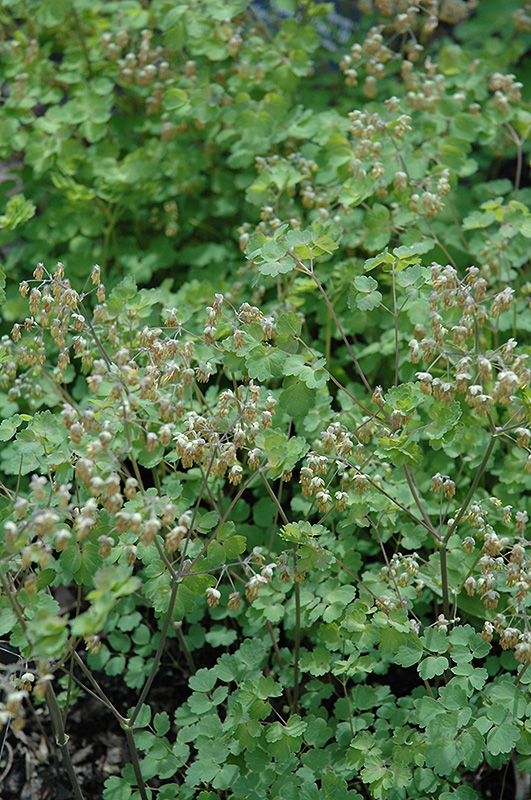Height: 14 inches
Spacing: 14 inches
Sunlight:
![]()
![]()
Hardiness Zone: 2
Description:
A pretty native woodland plant to most of North America east of the Mississippi and Red Rivers, which establishes itself in colonies as seeds drop
Ornamental Features
Early Meadow Rue features dainty panicles of purple star-shaped flowers with white overtones rising above the foliage from early spring to early summer. The flowers are excellent for cutting. Its ferny leaves emerge green in spring, turning grayish green in color. As an added bonus, the foliage turns a gorgeous olive green in the fall. The plum purple stems can be quite attractive.
Landscape Attributes
Early Meadow Rue is an herbaceous perennial with an upright spreading habit of growth. It brings an extremely fine and delicate texture to the garden composition and should be used to full effect.
This is a relatively low maintenance plant, and should be cut back in late fall in preparation for winter. It is a good choice for attracting bees and butterflies to your yard, but is not particularly attractive to deer who tend to leave it alone in favor of tastier treats. It has no significant negative characteristics.
Early Meadow Rue is recommended for the following landscape applications;
- Mass Planting
- Rock/Alpine Gardens
- Border Edging
- General Garden Use
- Naturalizing And Woodland Gardens
Planting & Growing
Early Meadow Rue will grow to be about 12 inches tall at maturity, with a spread of 18 inches. When grown in masses or used as a bedding plant, individual plants should be spaced approximately 14 inches apart. Its foliage tends to remain dense right to the ground, not requiring facer plants in front. It grows at a medium rate, and under ideal conditions can be expected to live for approximately 6 years. As an herbaceous perennial, this plant will usually die back to the crown each winter, and will regrow from the base each spring. Be careful not to disturb the crown in late winter when it may not be readily seen!
This plant does best in partial shade to shade. It does best in average to evenly moist conditions, but will not tolerate standing water. It is particular about its soil conditions, with a strong preference for rich, acidic soils. It is somewhat tolerant of urban pollution. This species is native to parts of North America.


